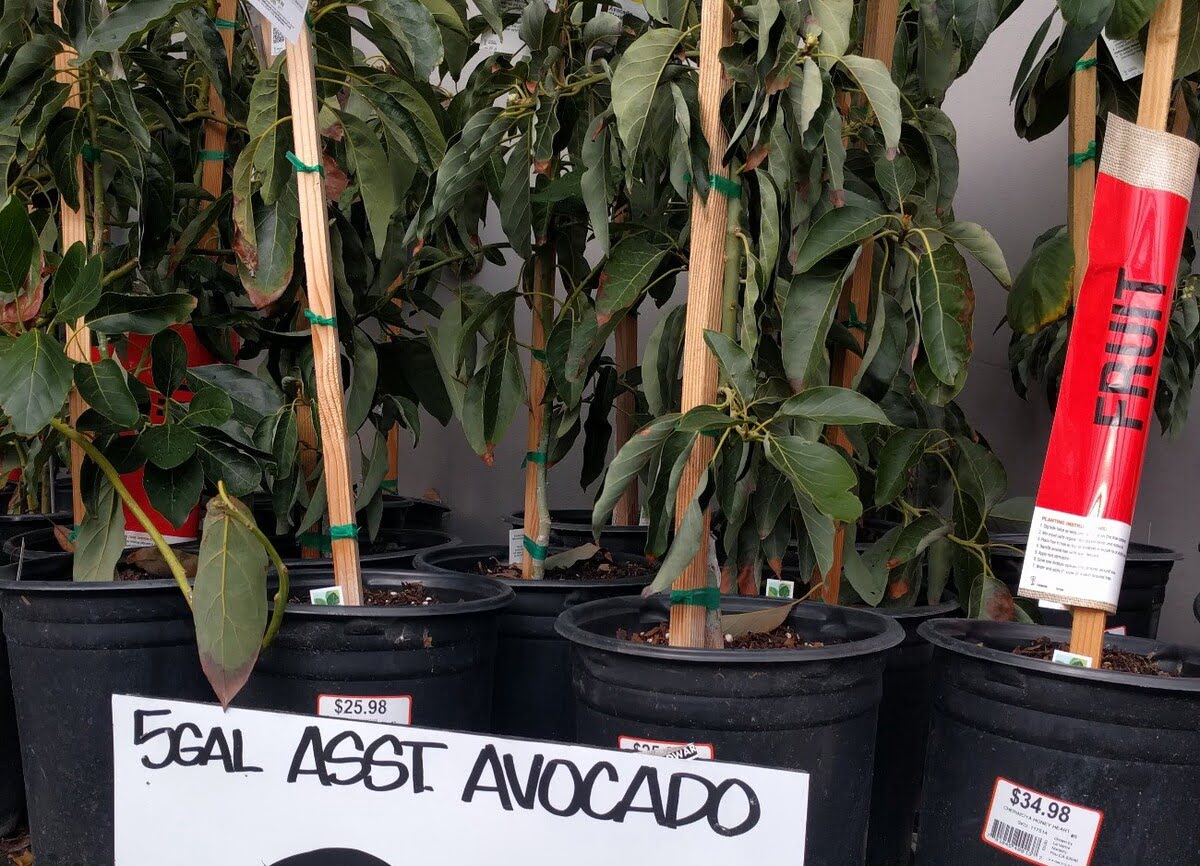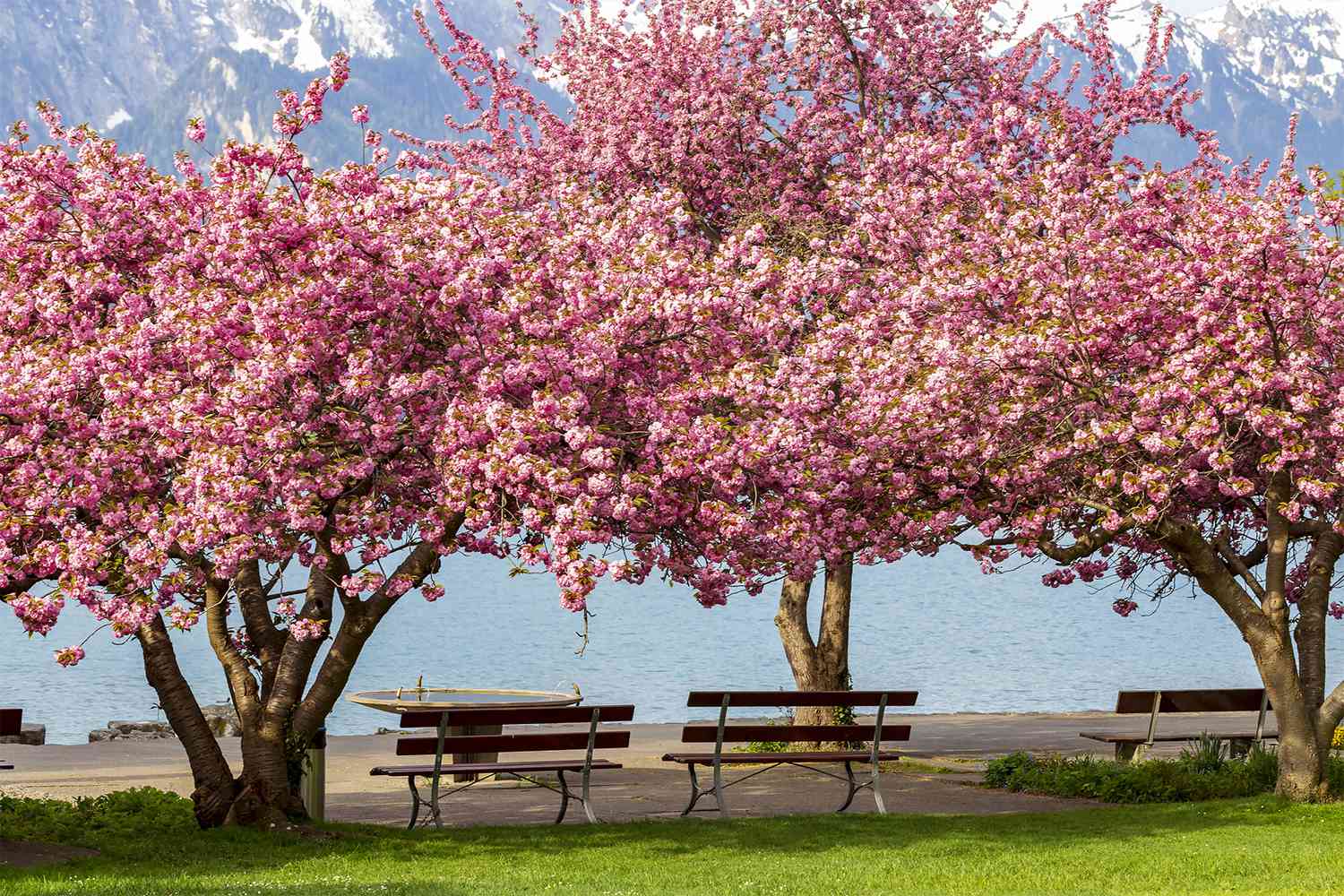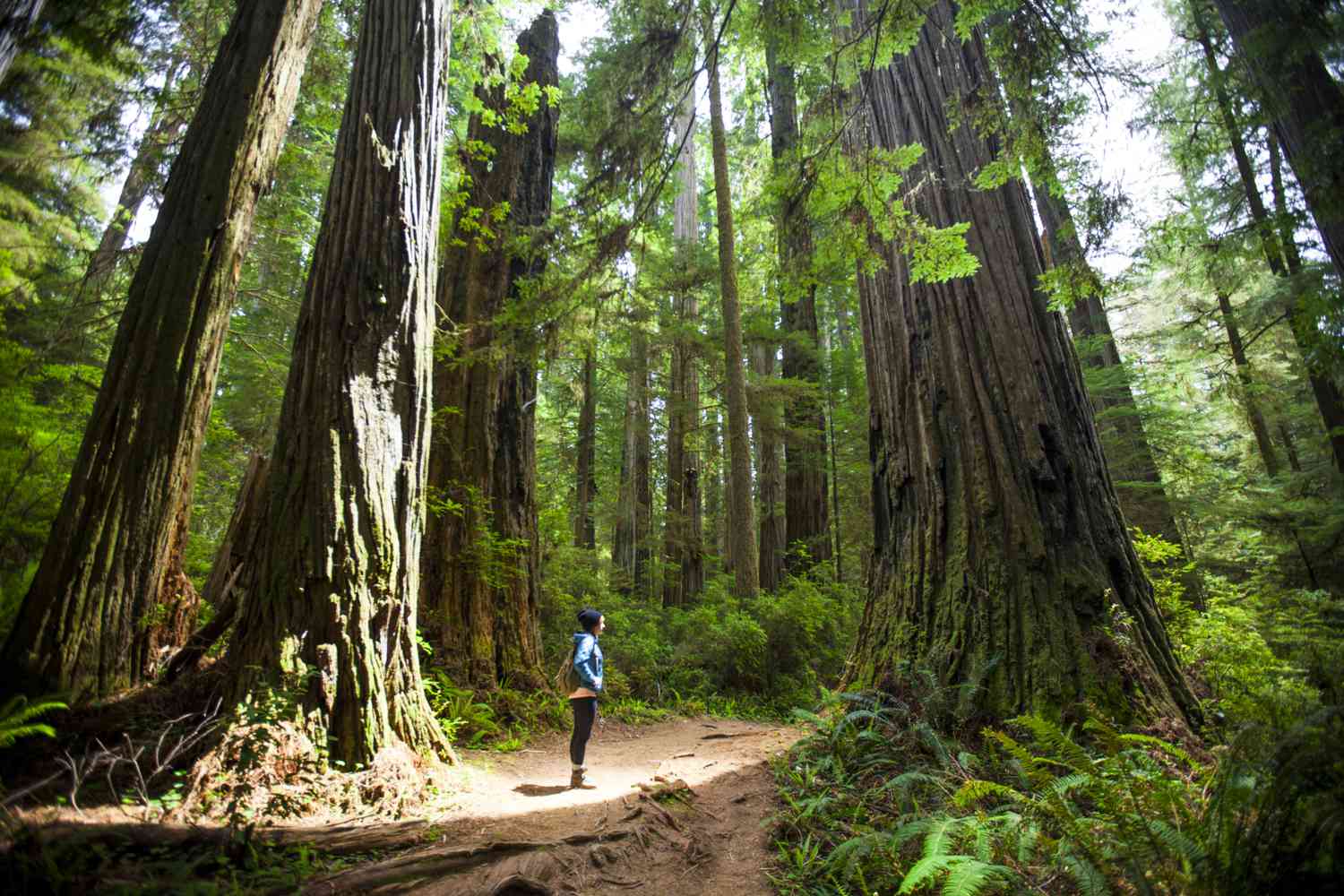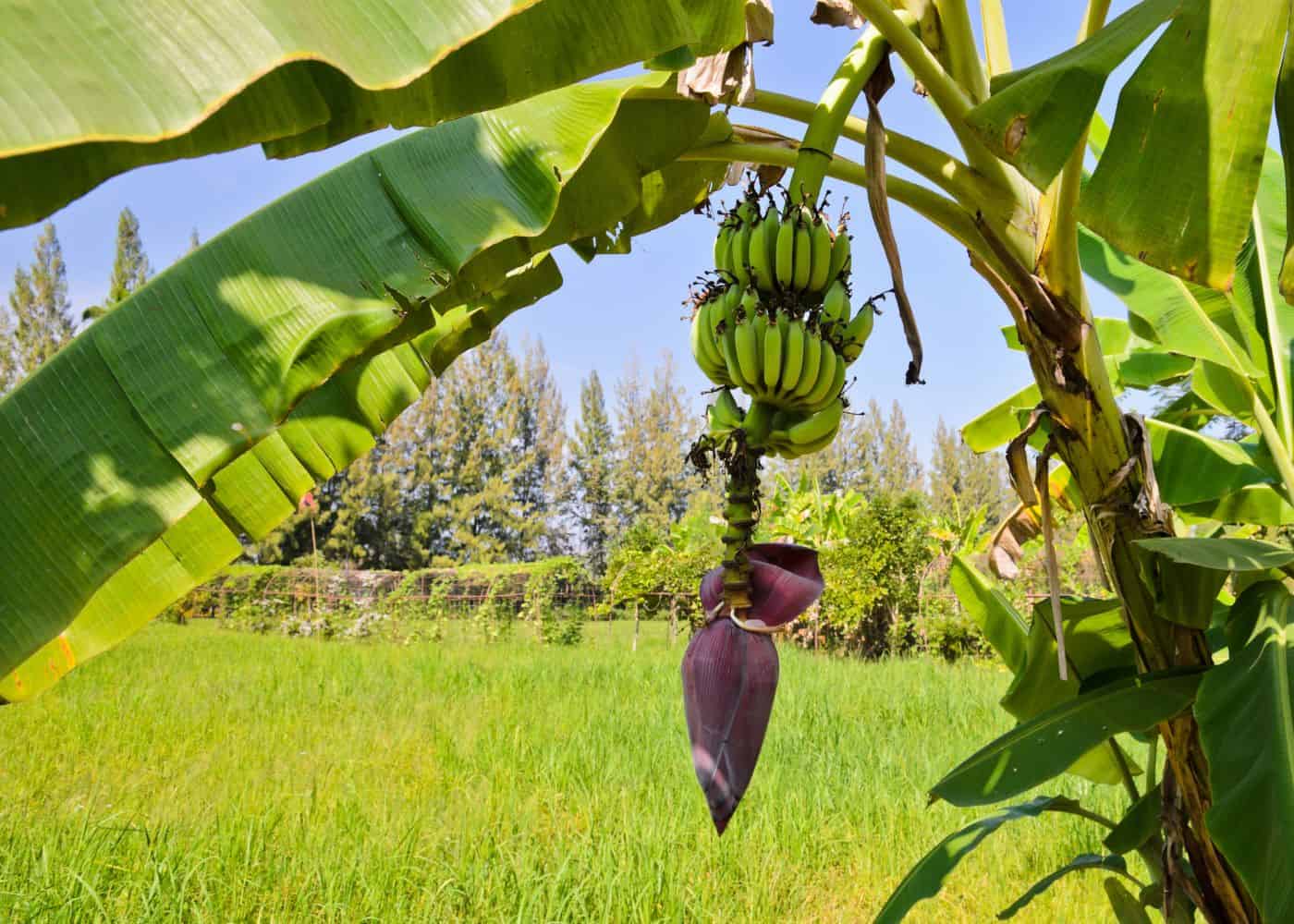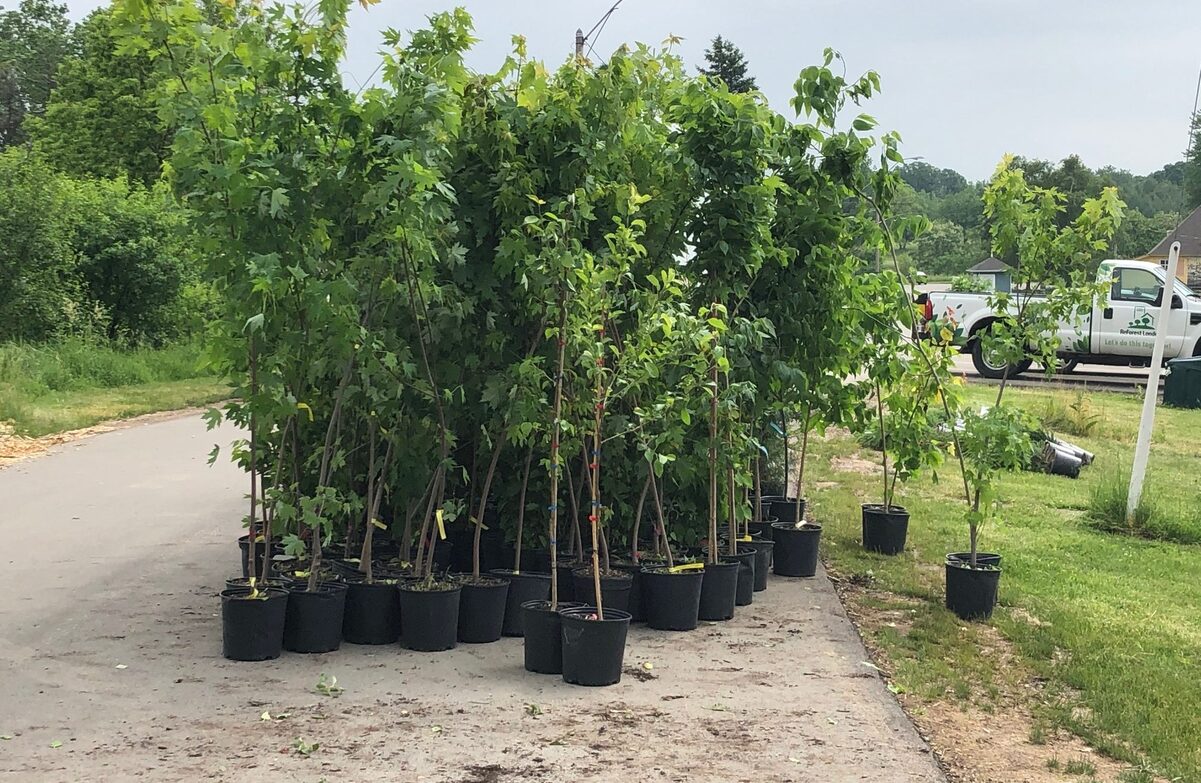Home>Types of Gardening>Ornamental Gardening>Where Are Rainbow Eucalyptus Trees Found
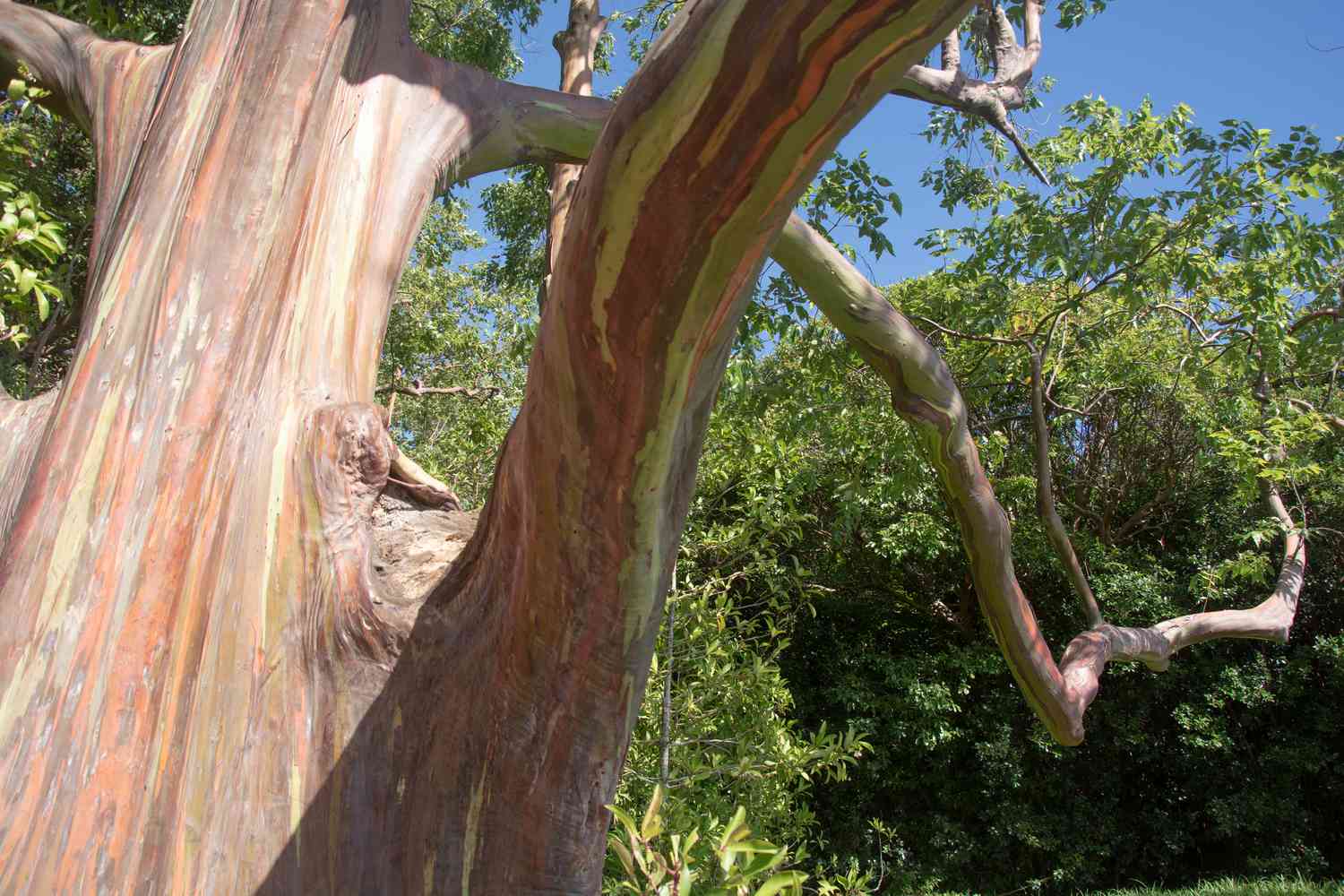

Ornamental Gardening
Where Are Rainbow Eucalyptus Trees Found
Modified: January 22, 2024
Discover the beauty of rainbow eucalyptus trees in ornamental gardening. Find out where these stunning trees are found and how to incorporate them into your garden.
(Many of the links in this article redirect to a specific reviewed product. Your purchase of these products through affiliate links helps to generate commission for Chicagolandgardening.com, at no extra cost. Learn more)
Table of Contents
Introduction
Welcome to the fascinating world of ornamental gardening, where beauty meets nature in the most breathtaking way. One particular tree that has captured the attention of garden enthusiasts and nature lovers alike is the Rainbow Eucalyptus tree. With its vibrant and colorful bark, this majestic tree adds a stunning touch to any landscape.
The Rainbow Eucalyptus tree, also known as Eucalyptus deglupta, is a unique and awe-inspiring species that hails from the diverse and lush rainforests of Southeast Asia. Its distinctive multicolored bark, resembling a painter’s palette, sets it apart from other trees in the temperate regions. The tree’s smooth, shedding bark displays shades of green, blue, purple, orange, and even maroon, creating a visual spectacle that is both mesmerizing and surreal.
Aside from its remarkable appearance, the Rainbow Eucalyptus tree also boasts impressive size and height. It can reach towering heights of up to 200 feet, making it one of the tallest eucalyptus trees in the world. Its broad crown spreads majestically, providing shade and shelter to the various flora and fauna that call the rainforest their home.
As ornamental gardeners, it’s important to understand not only the captivating beauty of the Rainbow Eucalyptus tree but also its ideal habitat and the countries where it can be found. By delving into the secrets of its growth and distribution, we can gain valuable insight into cultivating and caring for this magnificent tree, allowing us to bring a touch of the rainforest into our own gardens.
In the following sections, we will explore the habitat, distribution, climate requirements, and interesting facts about the Rainbow Eucalyptus tree. So, let’s embark on a journey through the rainforests and unravel the mysteries behind this remarkable botanical wonder.
Description of Rainbow Eucalyptus Trees
The Rainbow Eucalyptus tree is a true marvel of nature. Its most distinguishing feature is its stunning bark, which frequently peels away to reveal a spectrum of colors that can rival any artist’s palette. From vibrant greens to deep purples and rich oranges, the bark undergoes a gradual transformation as the tree matures.
When the smooth, outer bark of the Rainbow Eucalyptus tree naturally sheds, it exposes a new layer of bark underneath. This fresh layer starts off as a pale green color and gradually morphs into shades of blue, purple, and maroon as it matures. The combination of different pigments on the trunk creates an exhilarating display of colors that is rarely seen in the plant kingdom.
Aside from its mesmerizing bark, the Rainbow Eucalyptus tree also possesses elongated, lance-shaped leaves that are a glossy shade of green. These leaves release a distinct aroma, reminiscent of menthol or peppermint, when crushed.
Another notable characteristic of this tree is its impressive size. As mentioned earlier, it can reach heights of up to 200 feet, making it one of the tallest eucalyptus trees in existence. Its trunk, which can have a diameter of over six feet, is often straight and cylindrical, with minimal branching until higher up the tree.
Furthermore, the Rainbow Eucalyptus tree produces small, white flowers that attract an array of pollinators, including bees and butterflies. These flowers give way to woody, urn-shaped fruits that contain numerous tiny seeds. The dispersal of these seeds contributes to the expansion of this magnificent species in its natural habitat.
Overall, the Rainbow Eucalyptus tree is a remarkable sight to behold. Its vibrant and ever-changing bark, glossy leaves, towering height, and delicate flowers make it a captivating addition to any ornamental garden or landscape.
Habitat of Rainbow Eucalyptus Trees
The Rainbow Eucalyptus tree thrives in the warm and humid climates of its native habitat – the rainforests of Southeast Asia. These rainforests provide the perfect conditions for this extraordinary tree to flourish and display its vibrant colors.
One of the key factors that contribute to the growth of Rainbow Eucalyptus trees is the abundance of rainfall in their habitat. These trees require a significant amount of water to sustain their growth and to maintain their vibrant bark. The rainforests in which they are found receive copious amounts of rainfall throughout the year, providing the necessary moisture for the trees to thrive.
Another crucial component of their habitat is the rich and fertile soil found in the rainforest. The Rainbow Eucalyptus tree prefers well-drained soil with a high organic content. The nutrient-rich soil allows the tree to absorb the necessary minerals and nutrients, supporting its growth and overall health.
Furthermore, these trees prefer to grow in areas with minimal exposure to strong winds. The dense canopy of the rainforest provides a natural shield, protecting the delicate branches and leaves from the harsh effects of wind, which could potentially damage the tree.
Due to their need for warmth and humidity, Rainbow Eucalyptus trees are ideally suited to tropical and subtropical regions. They prefer temperatures that range from 68°F to 100°F (20°C to 38°C), and they thrive in areas with high humidity levels, usually around 70% or higher. These favorable conditions allow the tree to grow vigorously and maintain its iconic colorful bark.
As stunning as they are, the Rainbow Eucalyptus trees are not well-suited to areas with cooler climates or prolonged periods of drought. These conditions can hinder their growth and affect the vibrancy of their bark. Therefore, it is crucial to consider the natural habitat requirements of the Rainbow Eucalyptus tree when considering its cultivation in gardens or landscapes outside of its native range.
The habitat of the Rainbow Eucalyptus tree is a testament to the incredible adaptability and resilience of nature. It is within these rainforests that these magnificent trees have evolved and perfected their remarkable colors, captivating the hearts and minds of all who encounter them.
Distribution of Rainbow Eucalyptus Trees
The distribution of Rainbow Eucalyptus trees is primarily limited to the rainforests of Southeast Asia. Within this region, they can be found in several countries that provide suitable habitat for their growth and development.
One of the main countries where Rainbow Eucalyptus trees are found is the Philippines. These striking trees can be seen in various parts of the country, particularly in the southern regions such as Mindanao and Palawan. The warm and humid climate of the Philippines provides an ideal environment for these trees to thrive.
Another significant country in the distribution of Rainbow Eucalyptus trees is Indonesia. They are commonly found on the islands of Papua, Sulawesi, and Java. The diverse rainforests of Indonesia offer the perfect conditions for these trees to showcase their vibrant hues.
In addition to the Philippines and Indonesia, Rainbow Eucalyptus trees can also be found in Papua New Guinea. This neighboring country shares similar environmental conditions, including the warm climate and abundant rainfall, which are crucial for the growth of these trees.
Interestingly, there are also pockets of Rainbow Eucalyptus trees in other parts of the world, outside of Southeast Asia. These include areas in southern Florida, Hawaii, and parts of the Caribbean. While these locations are not within the tree’s native range, they have been cultivated and introduced to these regions due to their stunning beauty.
It is important to note that despite their geographic distribution, Rainbow Eucalyptus trees require specific climatic conditions to thrive. As such, even within the countries where they are found, their distribution may be limited to certain regions or areas that offer the necessary warmth, humidity, and rainfall.
The distribution of Rainbow Eucalyptus trees showcases their adaptability to specific regions of the world. While they are most commonly found in Southeast Asia, their beauty and allure have led to their cultivation in other tropical and subtropical regions where similar climate conditions can be replicated.
Now that we have explored their distribution, let’s delve into the specific countries where Rainbow Eucalyptus trees can be found, and discover the unique qualities that each region brings to the growth and development of these remarkable trees.
Countries where Rainbow Eucalyptus Trees are Found
The Rainbow Eucalyptus tree is primarily found in the rainforests of Southeast Asia, specifically in certain countries that offer the ideal climate and environmental conditions for their growth and development. Let’s take a closer look at some of the countries where these magnificent trees can be found:
1. The Philippines: The Philippines is one of the main countries where Rainbow Eucalyptus trees are abundant. They can be seen in various regions, particularly in Mindanao and Palawan. The warm and humid climate of the Philippines, along with its rich soil, provides an ideal habitat for these trees to thrive.
2. Indonesia: Indonesia is another country where Rainbow Eucalyptus trees can be found. They are commonly seen on the islands of Papua, Sulawesi, and Java. The diverse rainforests in these areas offer the perfect conditions for these trees to display their vibrant colors.
3. Papua New Guinea: The neighboring country of Papua New Guinea also boasts a significant population of Rainbow Eucalyptus trees. The tropical climate and abundant rainfall in this region create a suitable environment for these trees to flourish.
4. Other regions: While the aforementioned countries are the main locations where Rainbow Eucalyptus trees are native, they have also been introduced to other parts of the world. In southern Florida, particularly in the Florida Keys, these trees can be found, adding a tropical touch to the landscape. They have also been cultivated in Hawaii and in certain areas of the Caribbean due to their striking beauty.
The distribution of Rainbow Eucalyptus trees across these countries highlights their adaptability to specific regions. The warm, humid climates and abundant rainfall in these areas provide the perfect conditions for the growth and development of these remarkable trees.
Whether it’s witnessing the Rainbow Eucalyptus trees in their native habitat in Southeast Asia or encountering them in cultivated gardens in other parts of the world, experiencing the vibrant colors and majestic stature of these trees is truly a remarkable sight.
Climate Requirements for Rainbow Eucalyptus Trees
The Rainbow Eucalyptus tree has specific climate requirements to thrive and express its vibrant colors. Understanding these requirements is crucial for successfully growing and cultivating these magnificent trees. Let’s explore the key elements of their ideal climate:
Temperature: Rainbow Eucalyptus trees prefer warm climates and thrive in tropical and subtropical regions. They require temperatures ranging from 68°F to 100°F (20°C to 38°C) to grow vigorously. Freezing temperatures can be detrimental to their health, and prolonged exposure to cold can cause damage to the tree.
Humidity: These trees thrive in high humidity environments, typically around 70% or higher. The moisture in the air is vital for their growth and the maintenance of their vibrant bark. In regions with lower humidity, regular misting or providing a humid microclimate around the tree can be beneficial.
Rainfall: The Rainbow Eucalyptus tree requires a significant amount of rainfall to thrive. In its natural habitat, the rainforests of Southeast Asia, these trees receive abundant rainfall throughout the year. Therefore, they prefer moist conditions and regular watering. In regions with lower rainfall, supplemental irrigation may be necessary to provide adequate moisture.
Soil: These trees prefer well-drained soil with a high organic content. The soil should be rich in nutrients to support their growth. They thrive in soils that are slightly acidic to neutral, with a pH level between 5.5 and 7.5. Regular fertilization with a balanced, slow-release fertilizer can help provide the necessary nutrients for healthy growth.
Protection from Wind: Although Rainbow Eucalyptus trees are resilient, it is important to protect them from strong winds. Their delicate branches and leaves can be damaged by excessive wind exposure. Planting these trees in sheltered areas or providing wind barriers, such as fences or structures, can help protect them from the detrimental effects of wind.
It is important to note that replicating the exact climate of their native habitat may not always be possible. However, by understanding the climate requirements of Rainbow Eucalyptus trees, gardeners and enthusiasts can create microclimates or provide suitable growing conditions through careful cultivation and maintenance.
By providing the right balance of temperature, humidity, rainfall, and soil conditions, gardeners can mimic the ideal climate for these majestic trees. This allows them to thrive and display their breathtaking colors, adding a touch of the tropics to any landscape or garden setting.
Interesting Facts about Rainbow Eucalyptus Trees
The Rainbow Eucalyptus tree is a remarkable specimen that never fails to capture the imagination. Here are some interesting and fascinating facts about these magnificent trees:
1. Ever-changing Bark: The most striking feature of the Rainbow Eucalyptus tree is its bark, which undergoes a continuous transformation. As the outer layer sheds, it reveals a fresh layer underneath, displaying a vivid array of colors. The bark changes from shades of green to blue, purple, orange, and even maroon, creating a stunning and ever-changing spectacle.
2. Indigenous Populations: Rainbow Eucalyptus trees have a cultural significance among the indigenous populations in regions where they are found. They are often revered and used for various purposes, such as traditional medicine, construction, and even spiritual ceremonies.
3. Commercial Use: The wood of Rainbow Eucalyptus trees is sought after for its durability and attractive appearance. It is commonly used in crafting furniture, flooring, and even musical instruments. The distinct colors in the wood add a unique and eye-catching element to these products.
4. Environmental Benefits: Rainbow Eucalyptus trees contribute to the protection and preservation of their natural habitats. Their dense foliage provides shelter for a wide variety of wildlife, while their large size makes them valuable in combatting deforestation by reducing soil erosion.
5. Towering Heights: These impressive trees can reach towering heights of up to 200 feet, making them one of the tallest eucalyptus species in the world. Their stature and grandeur make them a sight to behold in any landscape or forest setting.
6. Rapid Growth: Rainbow Eucalyptus trees are known for their rapid growth rate. Under ideal conditions, they can grow up to 6 to 10 feet per year. This makes them an attractive choice for gardeners and landscapers who wish to add vertical interest to their outdoor spaces quickly.
7. Insect Repellent: The leaves and bark of Rainbow Eucalyptus trees contain natural oils that have insect-repellent properties. This characteristic contributes to the tree’s overall health and helps protect it from pest infestations.
8. Captivating Flowers: While the colorful bark steals the show, Rainbow Eucalyptus trees also produce small, showy flowers. These white blossoms attract a wide range of pollinators, including bees, butterflies, and birds, enhancing the biodiversity of their surroundings.
9. Adaptability: Despite their preference for tropical and subtropical climates, Rainbow Eucalyptus trees have been successfully cultivated in various regions around the world. This adaptability showcases their resilience and their ability to adapt to different environmental conditions.
10. A Natural Work of Art: With its ever-changing colors and towering presence, the Rainbow Eucalyptus tree is often considered a work of art in and of itself. Its remarkable beauty has captured the attention of artists, photographers, and nature enthusiasts worldwide.
These are just a few of the many captivating and interesting facts about Rainbow Eucalyptus trees. Their remarkable bark, environmental benefits, rapid growth, and cultural importance make them an extraordinary addition to any landscape or garden, providing a touch of wonder and awe.
Conclusion
The Rainbow Eucalyptus tree is truly a marvel of nature, captivating us with its vibrant colors and majestic presence. Its remarkable bark, ever-changing colors, and towering height make it a standout in any landscape or garden setting. Understanding its habitat, distribution, and climatic requirements allows us to appreciate the unique conditions needed for these trees to thrive.
From the rainforests of Southeast Asia to cultivated gardens in various parts of the world, the Rainbow Eucalyptus tree brings a touch of the tropics and a sense of wonder wherever it grows. Its adaptability and allure have made it a popular choice for those seeking to create a tropical-inspired garden or add a focal point to their outdoor space.
Whether you are fortunate enough to visit its native habitat or cultivate it in your own garden, the Rainbow Eucalyptus tree is sure to leave a lasting impression. Its ever-changing colors, rapid growth, and environmental benefits make it a truly extraordinary species.
So, as you embark on your ornamental gardening journey or seek to add a touch of natural beauty to your surroundings, consider the remarkable Rainbow Eucalyptus tree. Let its vibrant colors and majestic presence inspire and captivate you, as it has done for countless others.
With its unique qualities and stunning attributes, the Rainbow Eucalyptus tree serves as a reminder of the extraordinary diversity and beauty found in the natural world. May it continue to enchant and inspire us, encouraging us to appreciate and protect the wonders of our planet.
